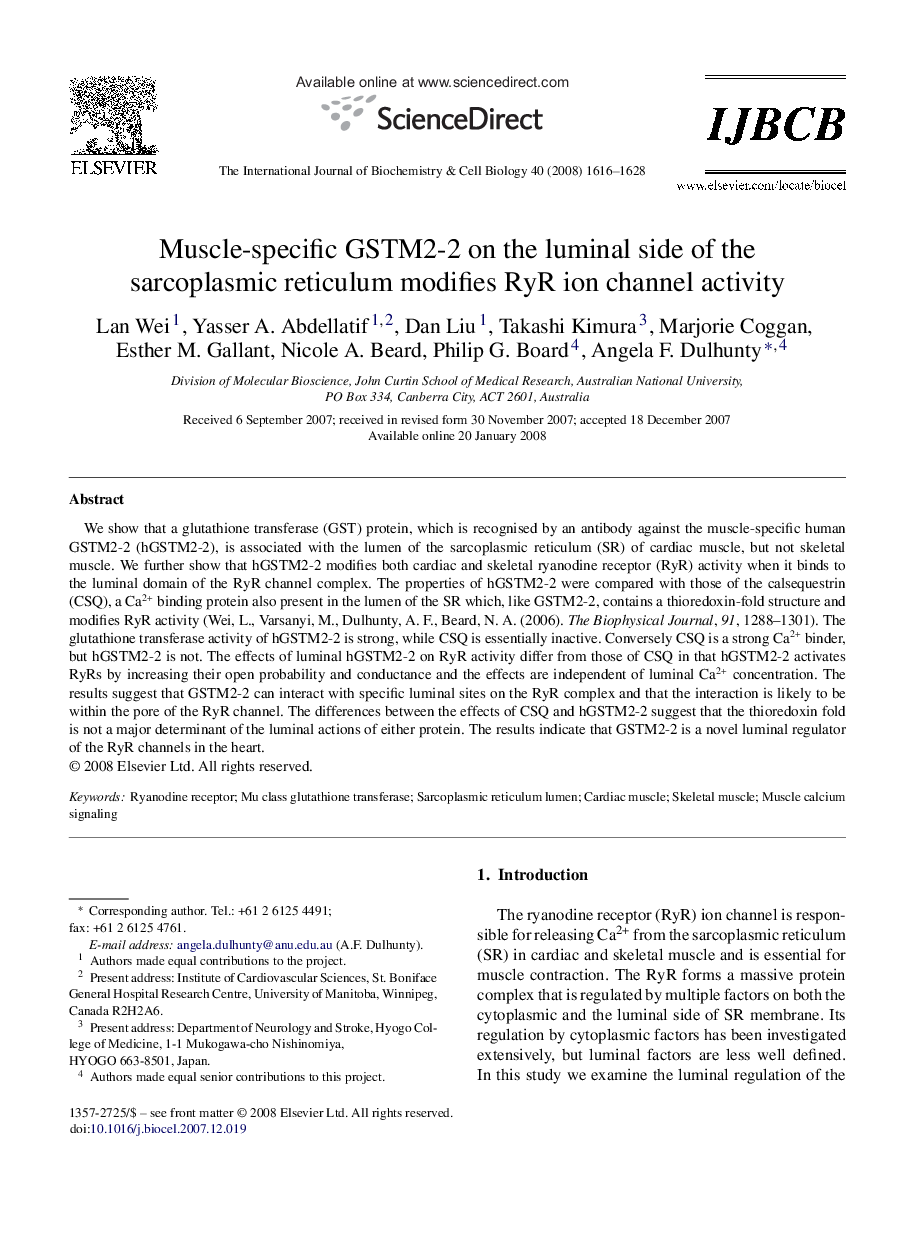| Article ID | Journal | Published Year | Pages | File Type |
|---|---|---|---|---|
| 1984879 | The International Journal of Biochemistry & Cell Biology | 2008 | 13 Pages |
We show that a glutathione transferase (GST) protein, which is recognised by an antibody against the muscle-specific human GSTM2-2 (hGSTM2-2), is associated with the lumen of the sarcoplasmic reticulum (SR) of cardiac muscle, but not skeletal muscle. We further show that hGSTM2-2 modifies both cardiac and skeletal ryanodine receptor (RyR) activity when it binds to the luminal domain of the RyR channel complex. The properties of hGSTM2-2 were compared with those of the calsequestrin (CSQ), a Ca2+ binding protein also present in the lumen of the SR which, like GSTM2-2, contains a thioredoxin-fold structure and modifies RyR activity (Wei, L., Varsanyi, M., Dulhunty, A. F., Beard, N. A. (2006). The Biophysical Journal, 91, 1288–1301). The glutathione transferase activity of hGSTM2-2 is strong, while CSQ is essentially inactive. Conversely CSQ is a strong Ca2+ binder, but hGSTM2-2 is not. The effects of luminal hGSTM2-2 on RyR activity differ from those of CSQ in that hGSTM2-2 activates RyRs by increasing their open probability and conductance and the effects are independent of luminal Ca2+ concentration. The results suggest that GSTM2-2 can interact with specific luminal sites on the RyR complex and that the interaction is likely to be within the pore of the RyR channel. The differences between the effects of CSQ and hGSTM2-2 suggest that the thioredoxin fold is not a major determinant of the luminal actions of either protein. The results indicate that GSTM2-2 is a novel luminal regulator of the RyR channels in the heart.
